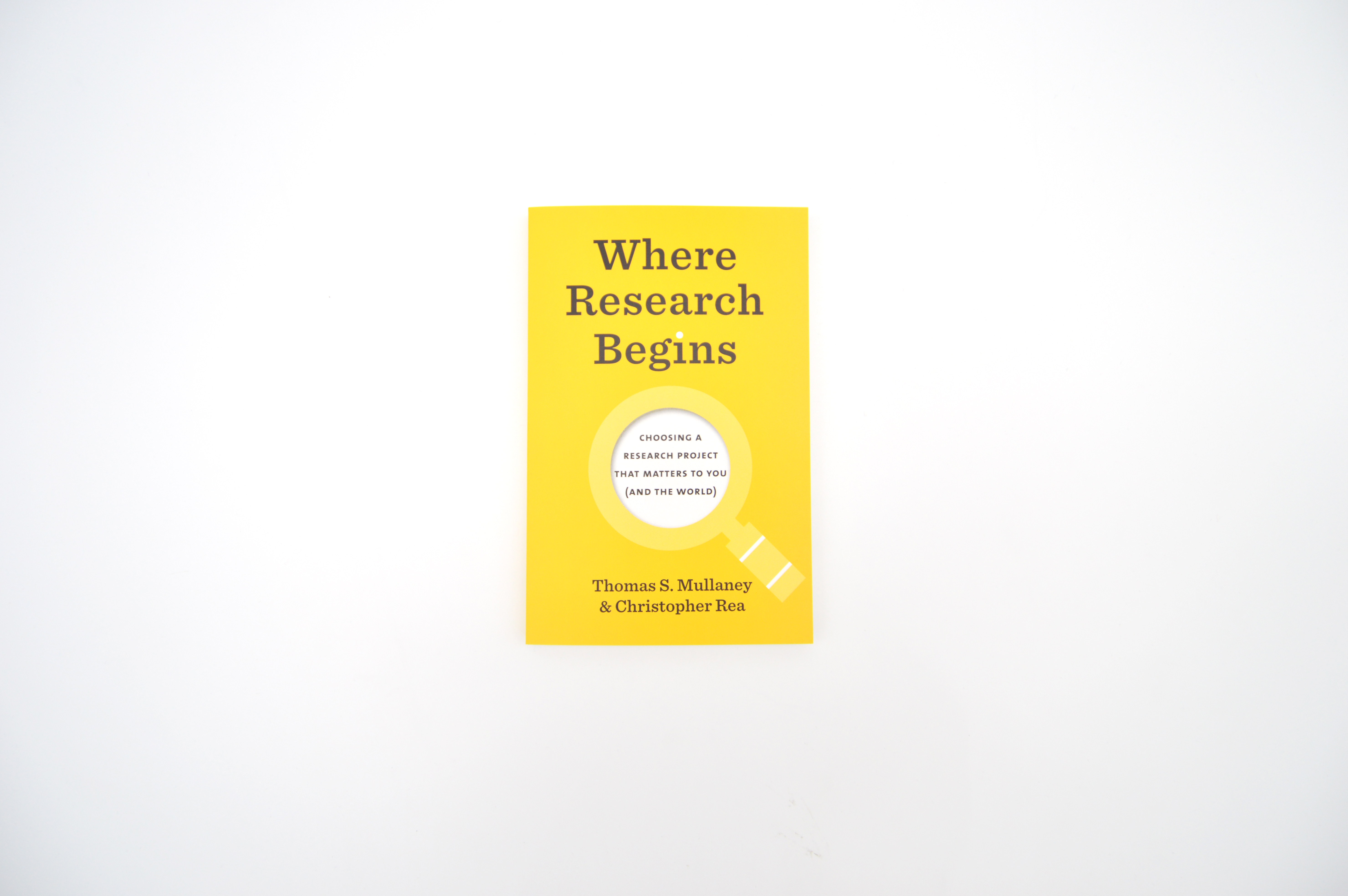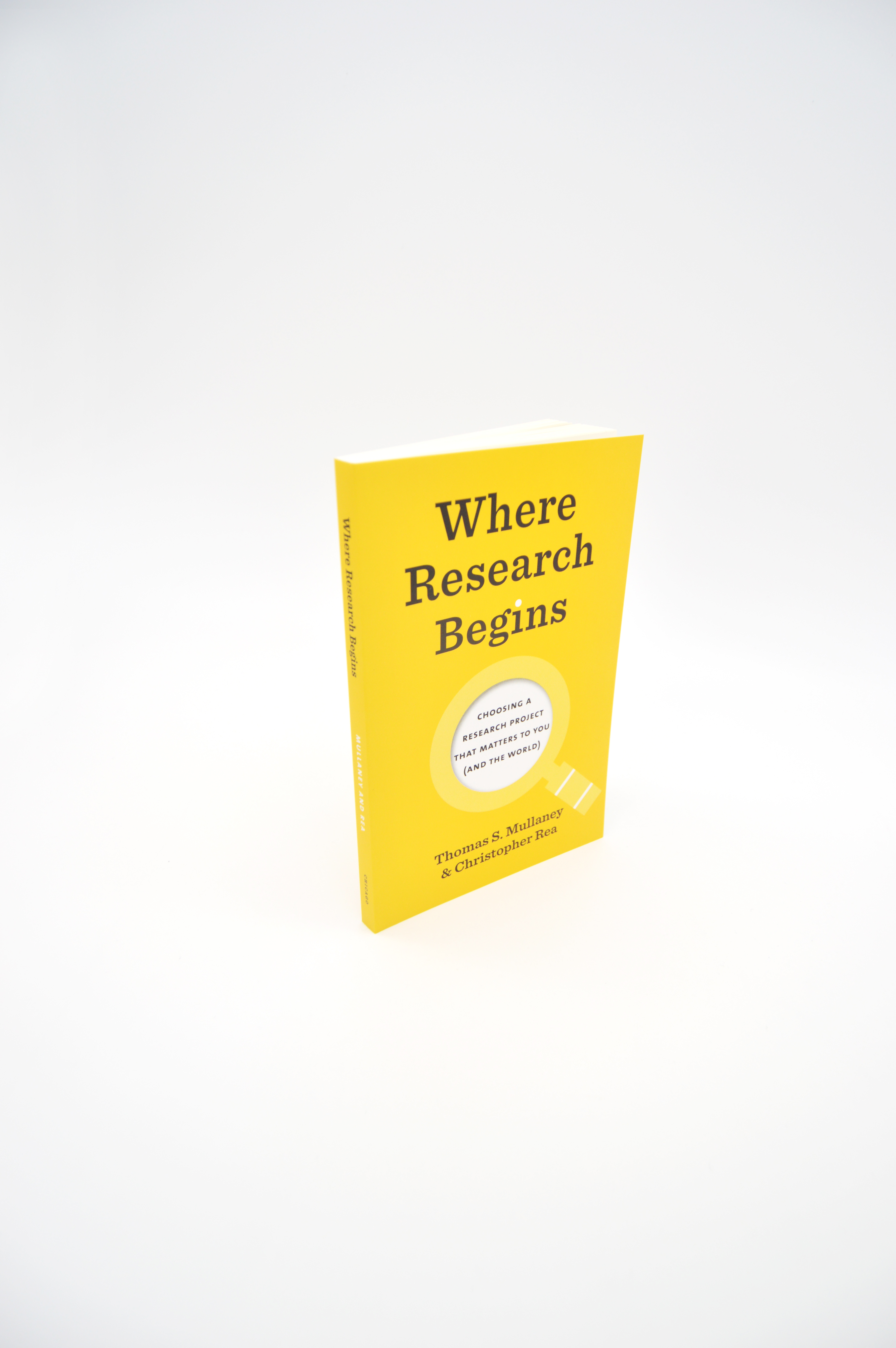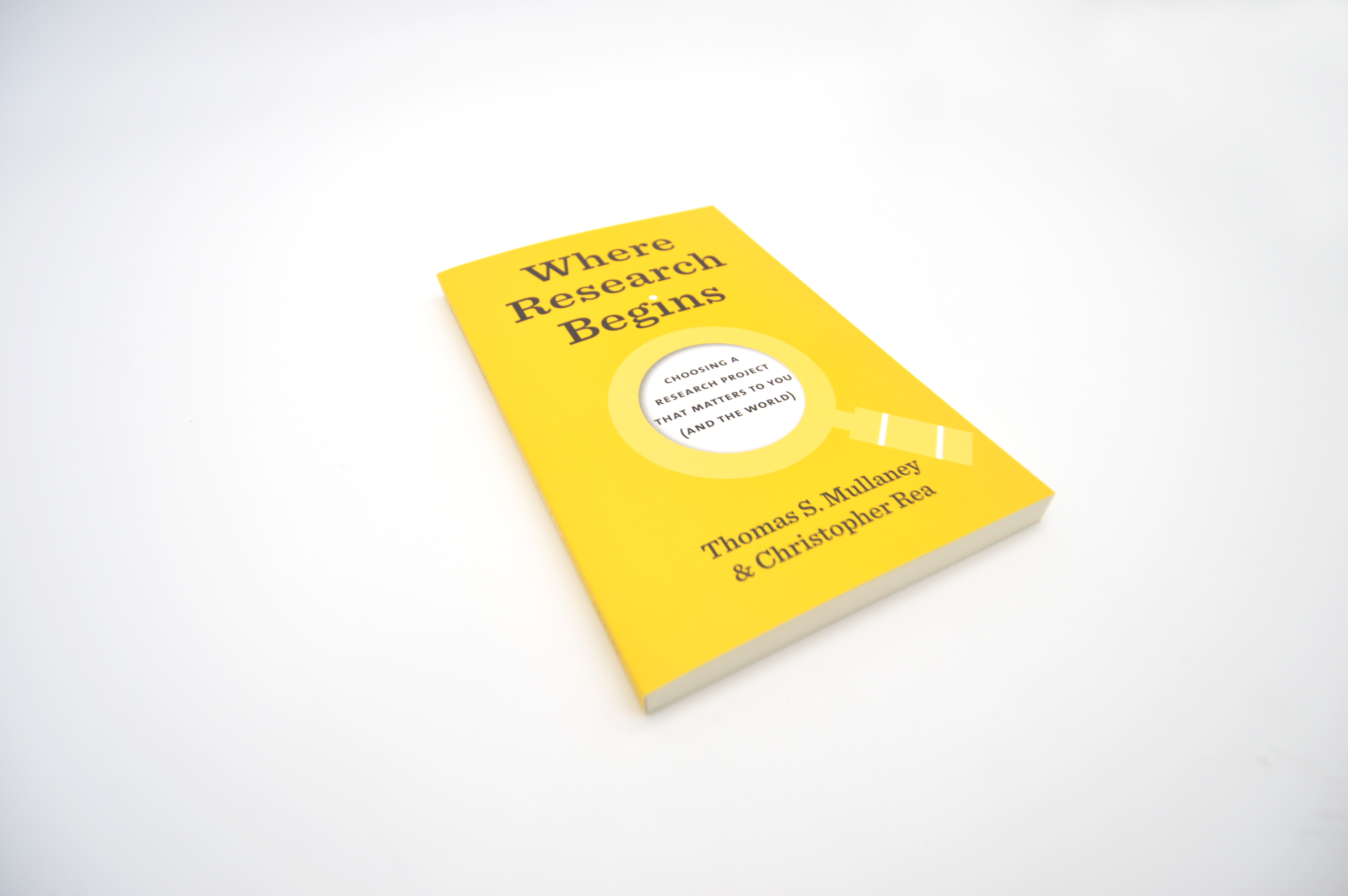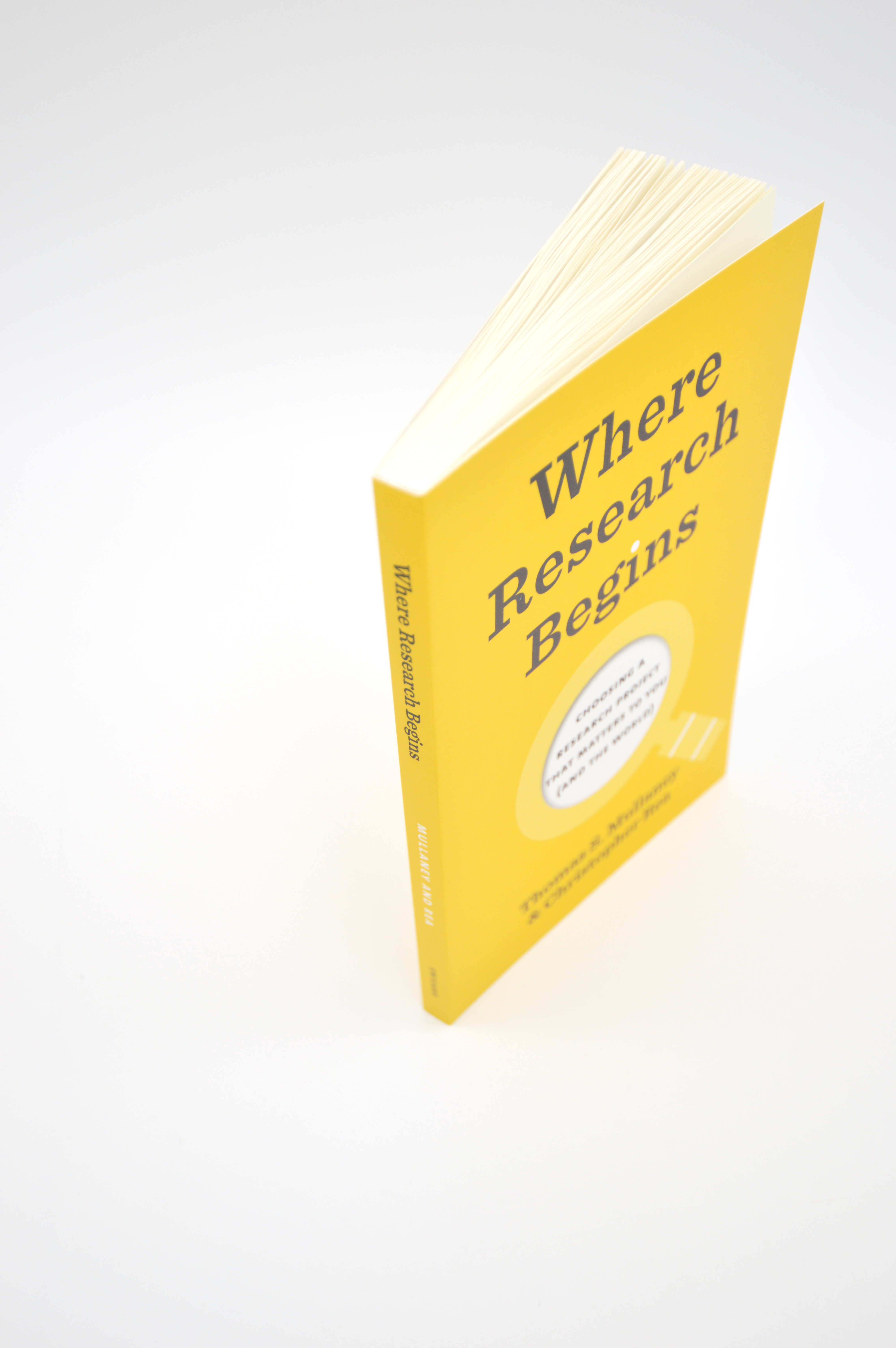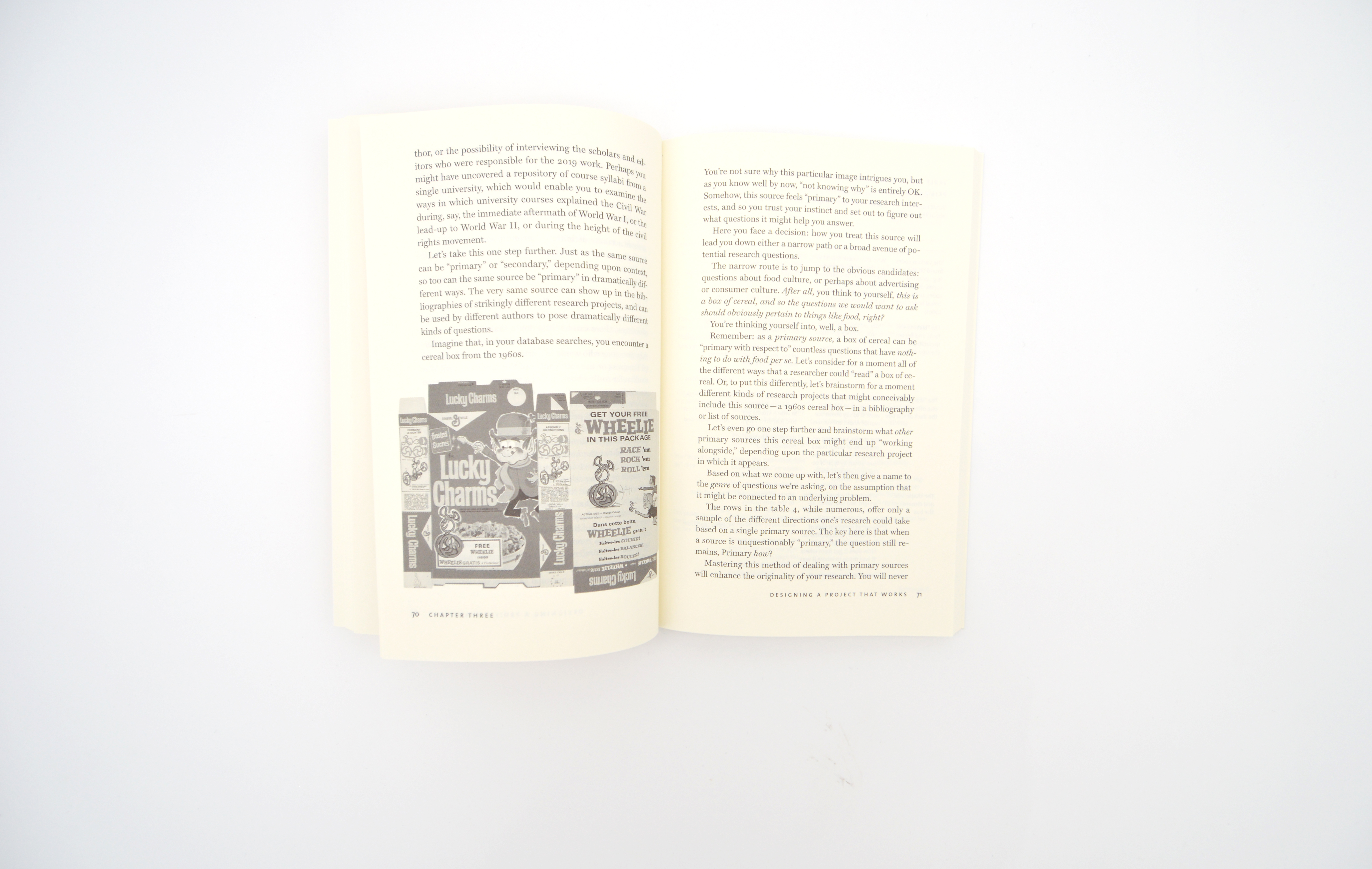Where Research Begins
Choosing a Research Project That Matters to You (and the World)
Where Research Begins
Choosing a Research Project That Matters to You (and the World)
Plenty of books tell you how to do research. This book helps you figure out WHAT to research in the first place, and why it matters.
The hardest part of research isn't answering a question. It's knowing what to do before you know what your question is. Where Research Begins tackles the two challenges every researcher faces with every new project: How do I find a compelling problem to investigate—one that truly matters to me, deeply and personally? How do I then design my research project so that the results will matter to anyone else?
This book will help you start your new research project the right way for you with a series of simple yet ingenious exercises. Written in a conversational style and packed with real-world examples, this easy-to-follow workbook offers an engaging guide to finding research inspiration within yourself, and in the broader world of ideas.
Read this book if you (or your students):
- have difficulty choosing a research topic
- know your topic, but are unsure how to turn it into a research project
- feel intimidated by or unqualified to do research
- worry that you’re asking the wrong questions about your research topic
- have plenty of good ideas, but aren’t sure which one to commit to
- feel like your research topic was imposed by someone else
- want to learn new ways to think about how to do research.
Under the expert guidance of award-winning researchers Thomas S. Mullaney and Christopher Rea, you will find yourself on the path to a compelling and meaningful research project, one that matters to you—and the world.
216 pages | 4 halftones, 9 tables | 5 1/2 x 8 1/2 | © 2022
Chicago Guides to Writing, Editing, and Publishing
Guides, Manuals, and Reference: Guides for College Students, Guides for Graduate Students
Reviews
Table of Contents
Self-Centered Research: A Manifesto
Centered Research Is the Best Research
How to Use This Book
Introversion, First. Extroversion, Second.
TRY THIS NOW: Write Here, Right Now
Part 1: Become a Self-Centered Researcher
Chapter 1: Questions
A Topic Is Not a Question
TRY THIS NOW: Search Yourself
TRY THIS NOW: Let Boredom Be Your Guide
TRY THIS NOW: Go Small or Go Home
SOUNDING BOARD: Start Building Your Research Network
You Have Questions
Chapter 2: What’s Your Problem?
Don’t Jump to a Question (or You’ll Miss Your Problem)
Stress-Testing Your Questions
TRY THIS NOW: Run a Diagnostic Test on Your Questions
TRY THIS NOW: Use Primary Sources to Educate Your Questions
TRY THIS NOW: Make Your Assumptions Visible
TRY THIS NOW: Identify the Problem That Connects Your Questions
SOUNDING BOARD: Get Leads on Primary Sources
You Have a Problem (in a Good Way)
Chapter 3: Designing a Project That Works
Primary Sources and How to Use Them (or, Fifty Ways to Read a Cereal Box)
TRY THIS NOW: Treat Your Primary Source Like a Cereal Box
TRY THIS NOW: Envision Your Primary Sources
Connecting the Dots: Getting from Sources to Arguments
Sources Cannot Defend Themselves
TRY THIS NOW: Connect the Dots Using Your Sources (in Pencil)
Taking Stock of Your Research Resources
TRY THIS NOW: Decision Matrix
SOUNDING BOARD: Is Your Decision Matrix Complete?
Two Types of Plan B
Setting Up Shop
TRY THIS NOW: Get Money for Nothing (Prepare a Formal Research Proposal)
SOUNDING BOARD: Share Your Proposal with a Trusted Mentor (Who Understands How Preliminary This Is)
You Have the Beginnings of a Project
Part 2: Get Over Yourself
Chapter 4: How to Find Your Problem Collective
Identify Researchers Who Share Your Problem
TRY THIS NOW: Change One Variable
TRY THIS NOW: Before and After
TRY THIS NOW: Map Out Your Collective (Secondary Source Search)
Rewriting for Your Collective
TRY THIS NOW: Find and Replace All “Insider Language”
SOUNDING BOARD: Does the Lay Version of My Proposal Make Sense?
Welcome to Your Collective
Chapter 5: How to Navigate Your Field
Find the Problems within Your Field
Read Your Field for Their Problems: Reimagining the “Literature Review”
TRY THIS NOW: Start Your Own “What’s Your Problem?” Bookstore (aka Organize Your Field into Problem Collectives)
TRY THIS NOW: Change Their Variables
TRY THIS NOW: Rewrite for Your Field
SOUNDING BOARD: Find a Sounding Board in Your Field
Welcome to Your Field
Chapter 6: How to Begin
Don’t Worry. It’s All Writing.
TRY THIS NOW: Create “Draft 0”
See What You Mean: Writing Draft 1
TRY THIS NOW: Move from 0 to 1
Perfection Is Boring
SOUNDING BOARD: Talk to Yourself
Welcome to Self-Centered Research
What’s Next in Your Research Journey?
TRY THIS NOW: Find a New Problem and Start a New Project
TRY THIS NOW: Help Someone Else
Acknowledgments
Further Reading
Index
Excerpt
In the early 2000s, when we were both in graduate school, we were assigned to teach a course on research methodology. The course was required for undergraduate majors in our department. On paper, it was taught by a professor, but in truth everything was left to us. With just a couple weeks’ notice, the two of us had to design a course of our own, with little guidance on how to do so. The one and only requirement was that each student produce a research proposal by the end of the term—a detailed plan of attack that outlined the specific questions the project sought to explore and answer, the sources they would use, and the potential implications and impact of their findings.
The two of us teamed up to map out an ideal, semester-long plan through which an undergraduate could develop a full-fledged research project in a relatively short span of time. We reflected on our own experiences, both as undergraduates and now as early-career professional scholars, and synthesized everything into a roadmap as clear as a twelve-step smoking cessation program. It covered everything, we thought: working with primary sources, note-taking strategies, compiling an annotated bibliography of secondary sources, developing a hypothesis, outlining the structure of a thesis, and summarizing the expected implications of the study.
By following our plan each student’s paper would come together piece by piece.
Or so we thought.
Something went wrong. As soon as the class started, our plan unraveled. Each week, the two of us met to compare notes, and we noticed a disturbing pattern: Despite our “easy-to-follow roadmap,” our students were stuck, struggling just to get out of the garage, let alone to make the cross-country journey we had charted out. How do I build a bibliography when I don’t know what I want to work on? I have general interests, but no questions—how do I ask the right
questions? How can my problem have “implications,” when I don’t even know what my problem is? I read a source and found it interesting—but what would my thesis be?
Half the semester raced by, and most of the students had yet to settle on a project idea that excited them. Everyone fell terribly behind. Without a research question, how could they “delve into sources” or “form a hypothesis?” How could they possibly transform their passion into a project if they weren’t sure what their passions were?
Some students chose to settle, selecting a topic that they didn’t feel any particular drive or passion for, and then dutifully working through our program. But it was plain to see that they had chosen their topics simply because they had to choose something. As the deadline approached, anxiety mounted for the students and for us alike.
The mistake we made is easy to see in hindsight: We had forgotten that the most challenging part of research is the part before you begin, when you don’t know what questions you want to ask or what problem you want to solve. The research process doesn’t begin after you figure out your core questions. The research process begins before you know what you are researching. This is the fundamental irony of research, an irony that no research guide teaches you how to navigate.
This book is the result of our experience—the result of a basic realization we came to as we struggled and failed to help a group of highly skilled and motivated students as they tried to begin their research journeys. What we realized is this: There are many books out there that explain the “research process” to researchers who already know what their question or problem is, but not one that helps a student figure out what their question or problem is in the first place. These books do a masterful job of explaining how to outline, draft, revise, cite sources, and more. And they do an effective job of instructing young researchers how to choose the
appropriate scale for their research projects. They may keep you on track if you already know your direction. But none of them teach you what to do before you know where you’re going. None of them teach us where to begin.
Why are there so many books on how to do research, yet so few on how to figure out what you are trying to research? This is not hard to explain. The assumption is that the average person already knows what their “passion” is , and just needs to follow it. A passion, we imagine, is something that everyone already has, and is fully aware of.
We have a different take on things. While we do believe that all people have passions, we do not assume that everyone already knows what theirs are. A person can have passions they are unable to articulate in words. A person can even have passions they are entirely unaware they have—either because they don’t know themselves all that well, or because they never realized that their particular set of curiosities and concerns “counted” as a passion. Even more confusingly, people sometimes guess incorrectly about where their true passions lie. This happens far more often than you would think. After all, we all live our lives surrounded by external expectations (social, cultural, familial, real, imagined) and it’s hard not to adopt some or all of these expectations as our own. Rather than learning the craft of introspection or self-trust, we opt for a quicker route: we take on the passions that other people have, and pretend as best we can that these passions are ours.
In other words, when faced with the question of where to begin our research, we too often look outside ourselves. We seek external validation. We let others set our agenda. But research begins with the researcher identifying the problem they carry inside them and figuring out what to do with it. This is what we failed to recognize back when we taught our very first class.
Without meaning to, we short-changed our students of the far more rewarding research experience they could have had.
We have reunited nearly twenty years later to make things right. This book is the course we wish we had taught—but didn’t have the experience decades ago. The guiding principle underpinning this book is one we call self -centered research.
Self-Centered Research: A Manifesto
In this book, we advocate a “self-centered” approach to research. Focusing on the early stages of the research process, we offer a series of exercises that will empower you with both a mindset and a variety of techniques to ensure that you begin your research journey pointed in the right direction—toward a problem that matters deeply to you.
What is Self-Centered Research, and why do it?
Let’s begin by clarifying what the term means—and what it doesn’t.
Self-Centered Research is:
- A practice of research that emphasizes the importance of setting out on the research journey from exactly where you are right now, and maintaining close contact with your own self—your instincts, your curiosities, and your biases—throughout the process. To be a “self-centered” researcher is to maintain your center of gravity over top of your own two feet at all times, and to avoid pursuing topics and questions that you imagine might please some imaginary, external judge.
- An ethic of research that involves consciously acknowledging and assessing your abilities and your limitations as a researcher. It involves being centered: to know who you are, to learn how to listen to your own instincts, to trust them even when they sound naive or inarticulate, and to learn how to refine them during the research process itself.
- A state of mind that affirms the value of your ideas, assumptions, and concerns in shaping your agenda and the direction of your research. It presumes that the better (and faster) you figure out your own concerns and motivations as a researcher, the better (and faster) you will discover a research question that is deeply meaningful both to you and to the world at large. The first and most important person who must be deeply concerned with your research question is you, the researcher.
Now that we’ve said what Self-Center Research is, let’s be clear about what it isn’t.
Self-centered research does not mean unleashing (or inflating) your Ego. Being self-centered is not to be self-absorbed, self-obsessed, self-congratulatory, self-consumed, self-indulgent, self-involved, self-serving, or self-ish.
Quite the opposite: Self-centered researchers are self-reflexive, and always self-critical; honest and probing about their own interests, motivations, and abilities; but also open and confident enough to assess the validity of others’. This means having the wherewithal to challenge received wisdom, including unfounded ideas you are probably carrying around without realizing it.

